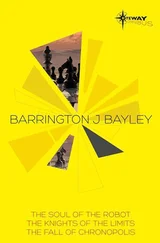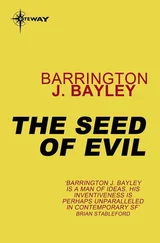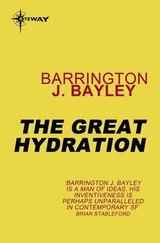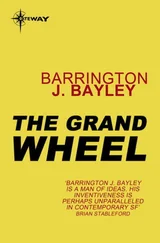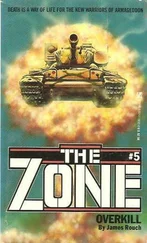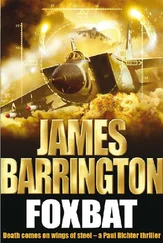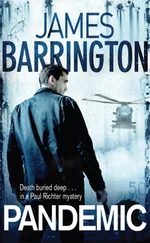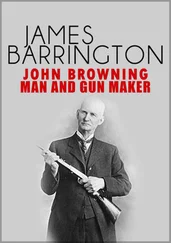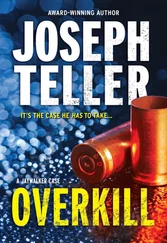Passing one mile and three hundred feet above runway elevation, the controller broke transmission. ‘Aspen Three Four inside one mile. Centreline and glide path. Confirm visual with the runway.’
In the cockpit of the Blackbird, Frank Roberts was dividing his time equally between monitoring his instruments and looking ahead for the airfield approach lights and runway. He looked ahead again. ‘Negative.’
‘Roger. I will continue to pass advisory information. Centreline and glide path. Three quarters of a mile.’
Frank Roberts ignored his instruments, concentrating all his attention on the view ahead. Blank, featureless grey murk met his eyes. Then it was as if a carpet had been dragged out from under them, the grey cloud dispersed as if it had never been and the high-intensity approach lights shone clear and bright, directly ahead.
‘Centreline and glide path. Half a mile.’
‘We have the runway, we have the runway. Thank you, sir.’
‘Roger, Three Four. Call Tower on three three seven decimal seven five.’
‘Three three seven decimal seven five.’
The Blackbird punched out of the murk at a little under one hundred and fifty feet. The Local Controller, looking out to the east through binoculars, saw an unfamiliar grouping of lights materialize at precisely the same moment that the aircraft called him.
‘Lossiemouth Tower, Aspen Three Four.’
The controller lowered the binoculars, made a final visual check of the runway and pressed his transmit key. ‘Aspen Three Four, Tower. Confirm landing checks complete.’
‘Affirmative. Three Four has checks complete; all green.’
‘Roger. Land runway two three. Surface wind green three five at fifteen knots.’ The Local Controller raised his binoculars again and focused on the aircraft as it approached the threshold of the active runway. ‘What the hell is it? It’s a – no it isn’t.’ The controller lapsed into silence and watched the aircraft’s profile become visible as Frank Roberts lifted the nose for touchdown. ‘Fuck me,’ he said. ‘A Blackbird.’
Sluzhba Vneshney Razvyedki Rossi Headquarters, Yazenevo, Tëplyystan, Moscow
A little over ten miles south-west of the centre of Moscow, not far from the village of Tëplyystan, a black ZIL limousine pulled off the circumferential highway onto a narrow road leading into dense forest. The car passed a large sign that warned the curious not to stop or trespass, and announced that the area was a ‘Water Conservation District’.
About two hundred yards down the road the car stopped at what appeared to be a militia post while the driver’s, bodyguard’s and passengers’ passes were examined by armed SVR troops dressed as militiamen. As the electric windows hissed closed, the car surged forward and came to rest in a reserved parking space about a third of a mile beyond. The driver and bodyguard got out immediately and opened the rear doors, but the passengers seemed oddly abstracted, and remained in the car, talking, for a few minutes more.
The two passengers finally emerged, acknowledged the salutes somewhat listlessly, and made their way through the turnstiles in the guardhouse, the only break in the high chain-link fence, topped with barbed wire. Armed sentries from the SVR Guards Division, wearing khaki service dress uniforms, with blue flashes on the lapels and blue stripes on the trousers, inspected the special passes each officer showed. They were buff-coloured plastic cards that showed the bearer’s photograph and incorporated coded perforations designating the areas he or she was authorized to enter.
Through the guardhouse, the two officers made their way slowly along the driveway through the lawns and flowerbeds to the SVR building, the former headquarters of the KGB First Chief Directorate. It was designed by Finnish architects and constructed, at least in part, with materials and equipment purchased in Scandinavia. The original seven-storey structure is shaped like a three-pointed star, incorporating a lot of glass and aluminium, with a blue stone trim around many of the windows, but is now dwarfed by a twenty-two-floor extension at the end of the western arm of the building.
The officers passed through the double glass doors and entered the large marble foyer, again showing their passes to armed guards, and walked over to the main group of elevators located in the centre of the building. Once inside, the older of the two men pressed the button for the seventh floor. When the elevator stopped they got out, walked slowly down the carpeted corridor, and entered an office suite.
‘Good afternoon, General.’ Lieutenant Vadim Vasilevich Nilov, a fresh-faced and eager officer in his late twenties, greeted his superior with his usual mixture of deference and respect, and hurried to relieve him of his uniform cap and greatcoat. He snapped to attention and saluted the other officer, and extended him the same courtesy.
Nilov had, as usual, arrived at the headquarters before seven that morning, had spent two hours reviewing all the overnight signal traffic, marking those of interest, and checking the office schedule for the coming day. He would remain at the headquarters until eight or nine in the evening. General Modin often wondered how much sleep, if any, Nilov needed. He was quite sure he had no social life whatsoever.
Nilov had been aide to General Nicolai Fedorovich Modin since the day the General had arrived at Yazenevo to head Department V of the KGB’s First Chief Directorate. The metamorphosis of the KGB into the SVR had caused little change, except that the ‘Department V’ tag had been dropped and the section renamed.
‘There has been priority traffic all morning, General, about the American over-flight. The signals are in the red folder on your desk.’
Modin smiled somewhat tiredly. ‘I would have been astounded, Vadim, if there hadn’t been priority signals. What do they expect the SVR to do? We have no aircraft or missiles.’
Nilov smiled. ‘I could not say, General.’
‘No matter. Coffee?’
‘Also on your desk, comrade General. I will bring another cup.’
Modin nodded his thanks, led the way into the inner office, picked up the red folder and sat down in a leather armchair by the window. He motioned his companion into the other chair. Nilov returned with a second cup, poured the coffee and set the cups on the low table between the chairs. Then he withdrew, closing the office door quietly behind him. Modin picked up his cup and looked thoughtfully at the other man. ‘Well, Grigori. What do we do about it?’
General Grigori Petrovich Sokolov was technically Modin’s subordinate, but the two men had known each other for so many years that their working relationship had developed into a firm friendship. Sokolov was short and slim, with a friendly, open face under thick grey hair. He didn’t look like a Russian, a fact that had helped his career. An old KGB hand, he had headed the First Chief Directorate’s Twelfth Department, a somewhat unusual and very powerful organization staffed by veteran KGB officers who had a remit to identify and pursue their quarry – anyone in any Western military, intelligence, business or government organization who might prove useful to the Soviets – anywhere in the world. As with Modin, the metamorphosis of the KGB into the SVR had changed virtually nothing.
Sokolov put down his cup. ‘I don’t know, Nicolai, I really don’t.’ He paused for a few moments. ‘What can they discover from the films?’
Modin sighed. ‘Not very much, I think. I talked to our technical specialists this morning, as soon as Nilov telephoned, but they do not know how good the American cameras are. However, even if the cameras are excellent, there was little that they could see. What worries me more are the radiation detectors, and also why they flew the spy-plane at all.’
Читать дальше

